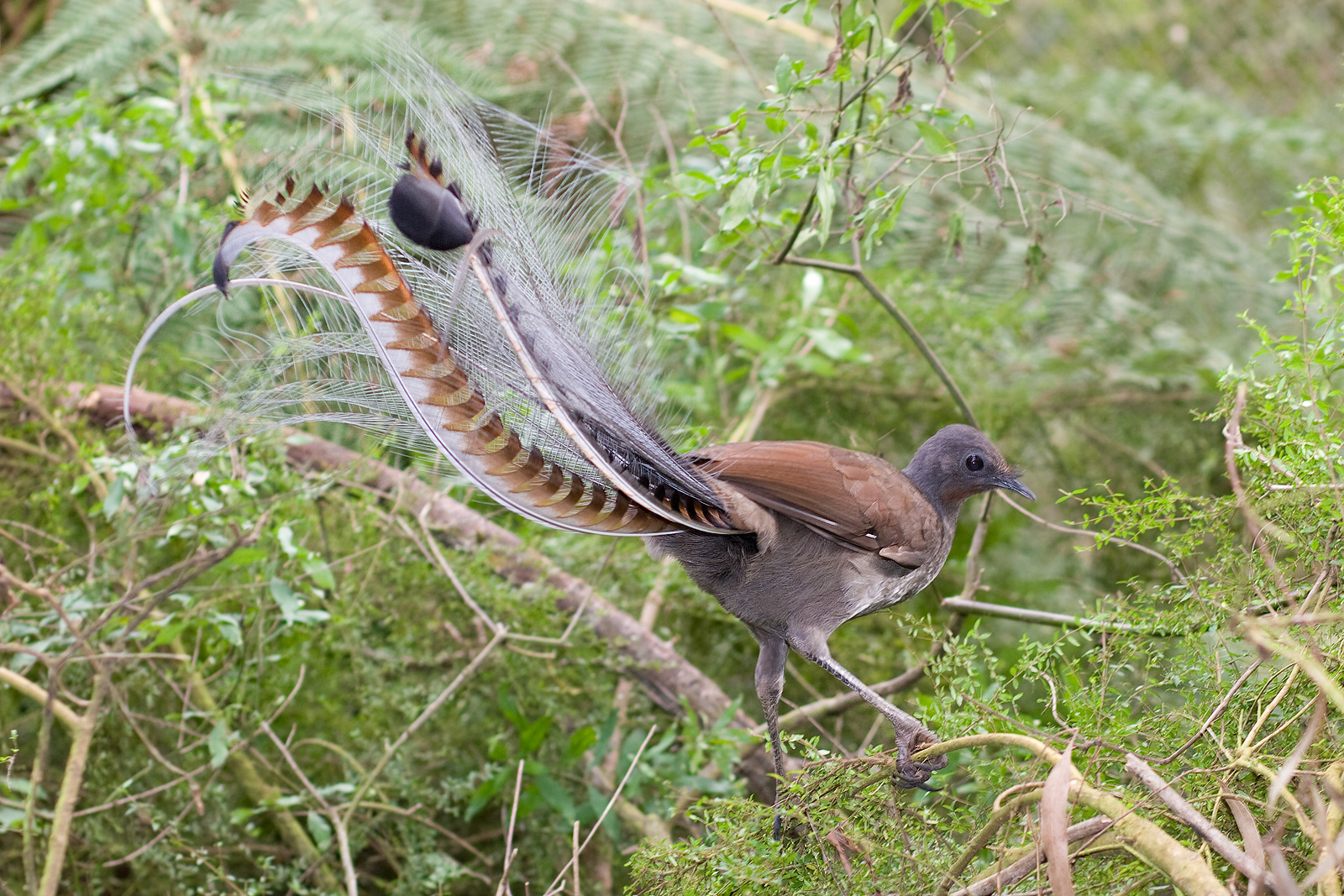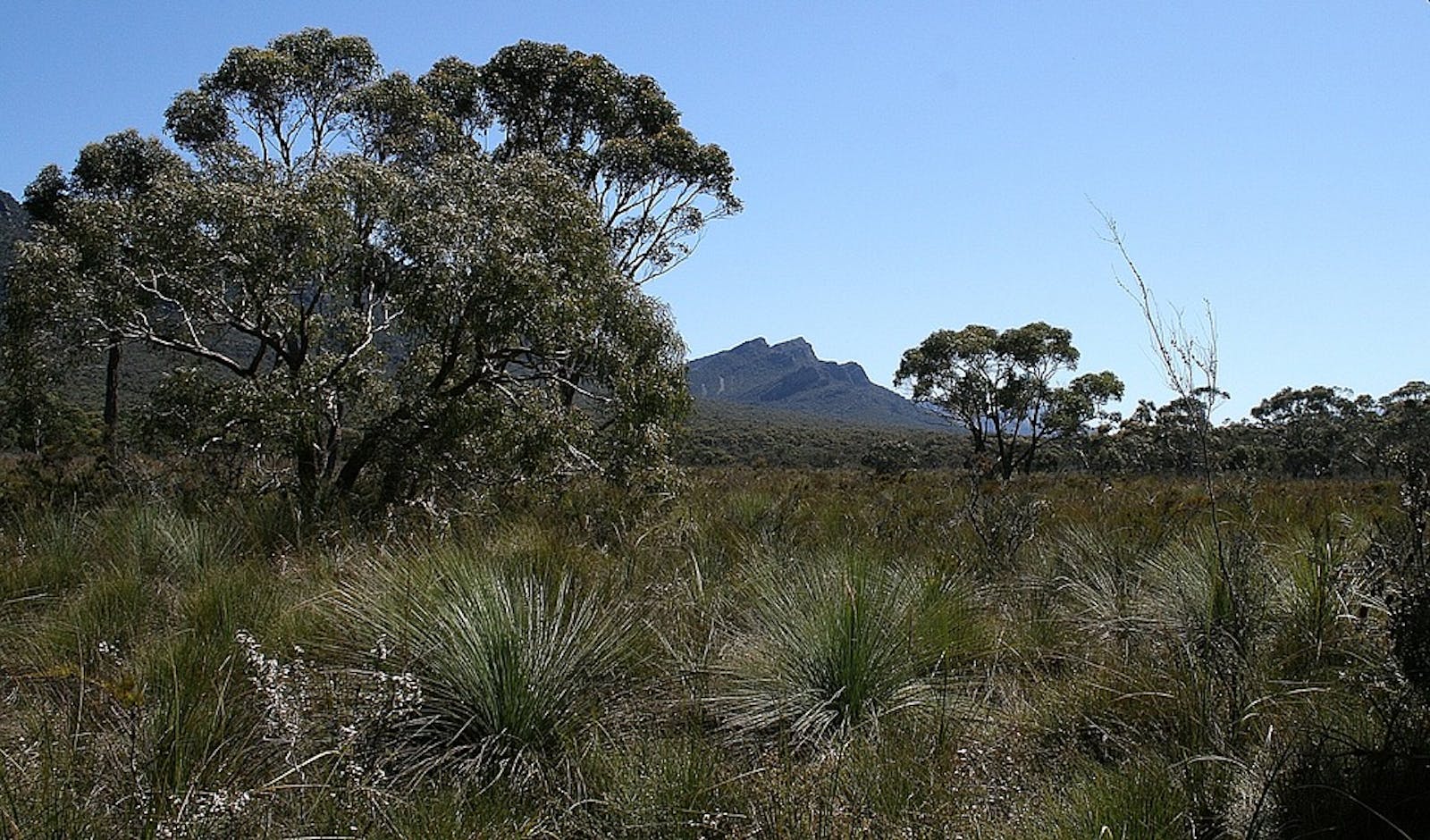Southeast Australia Temperate Forests
The ecoregion’s land area is provided in units of 1,000 hectares. The conservation target is the Global Safety Net (GSN1) area for the given ecoregion. The protection level indicates the percentage of the GSN goal that is currently protected on a scale of 0-10. N/A means data is not available at this time.
Bioregion: East Australian Temperate Forests & Mountain Shrublands (AU3)
Realm: Australasia
Ecoregion Size (1000 ha):
18,912
Ecoregion ID:
176
Conservation Target:
17%
Protection Level:
6
States: Australia
Feathertail gliders and gang-gang cockatoos inhabit the diverse forests and woodlands of southeastern Australia. The ecoregion covers the coastal lowlands and inland tablelands that lie inland of the Great Dividing Range and Australian Alps. Soils are relatively fertile with a cooler temperate climate. Vegetation types are diverse and include dense heath, temperate rainforest, riparian communities, wet sclerophyll forests, dry sclerophyll forests, and eucalypt woodlands. Many eucalypt species occur here but some of the more dominant species include brown stringybark (Eucalyptus baxteri), manna gum (E. viminalis), messmate stringybark (E. obliqua), and mountain grey gum (E. cypellocarpa). In the drier inland areas box-ironbark formation predominate with grey box (E. microcarpa), yellow box (E. melliodora), and Blakely’s red gum (E. blakelyi). Spear grasses (Stipa scabra and S. bigeniculata) grow on flat treeless basalt plains near the Geelong area, and on the Southern Tablelands of New South Wales.
_-Gang-gang%20cockatoo-CC-Peter%20Shanks-2008.jpg)
Flagship species: gang-gang cockatoo. Image credit: Peter Shanks, Creative Commons
Biotic communities in this ecoregion are relatively diverse for Australia. For example, over 1,100 plant species have been recorded from the sandstone Grampian Ranges. Mammals include spotted-tail quoll (Dasyurus maculatus maculatus), long-nosed potoroo (Potorous tridactylus), Eastern pygmy possum (Cercartetus nanus), white footed dunnart (Sminthopsis leucopus), and the koala (Phascolarctos cinereus). Leadbeater’s possum (Gymnobelideus leadbeateri) occurs only in the wet eucalypt forests of the Victorian Central Highlands. Orange-bellied Parrot (Neophema chrysogaster), gang-gang cockatoo (Callocephalon fimbriatum), rufous bristlebird (Dasyornis broadbenti), and pilotbird (Pycnoptilus floccosus) are part of a rich bird fauna. The giant Gippsland earthworm (Megascolides australis), one of the largest in the world growing to 3 m, are restricted to the Bass River Valley region in Victoria. Several species of dasyurid carnivores, bats, owls, and cockatoos are particularly dependent on large areas of old growth eucalypt forest.

Superb lyrbird. Image credit: Creative Commons
Over 50% of the native vegetation has been cleared in this region, including over 90% of the temperate woodlands in the State of Victoria, mostly for agriculture. Rabbits, cats, goats, pigs, and other introduced feral animals degrade vegetation and prey on native species. Rainforests are increasingly threatened with dieback due to the spread of the introduced disease Phytophthora spp. In 2019–2020 extensive bushfires in the region have destroyed large areas of natural habitat. Persistent heat and drying fuelled by global heating are contributing to the advent of severe bushfires, even in habitats such as wetter forests that rarely burn. The Grampians, Wilson’s Promontory, Wadbilliga, Deua, and Morton National Parks are notable protected areas. Most protected areas are located along the coastal plain rather than in the inland regions.
The key conservation actions for the next decade are to: 1) urgently adopt bushfire management and adaptation, such as identifying defensible refugia for native communities in the face of increasingly frequent and widespread fires into the future; 2) secure priority remnants of natural vegetation for inclusion into the protected area network; 3) control and regulate public access into priority remnants of native vegetation, including mountain bikes, trail bikes, and vehicles; and 4) manage exotic pests, including foxes, goats, rabbits and feral pigs.
Citations
- Beadle NCW. 1981. The Vegetation of Australia. Cambridge University Press, Cambridge, United Kingdom.
- Berra TM. 1998. A Natural History of Australia. Academic Press, San Diego, California, USA.
- Lunt I, AF Bennett. 2000. Temperate woodlands in Victoria: distribution, composition, and conservation. Pages 17 – 31 in RJ Hobbs, CJ Yates, editors. Temperate Eucalypt Woodlands in Australia: biology, conservation, management, and restoration. Surrey Beatty & Sons, Chipping Norton, New South Wales, Australia.
- Conservation Management Zones of Australia, South Eastern Australia Mixed Temperate Forests Woodlands and Grasslands. (2015). Retrieved from:



